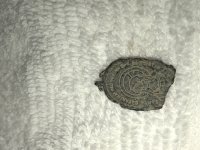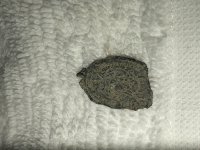hudsonlarking
Jr. Member
I have a ton of things needing ID but I think this sits atop that list. With Isaias gone, mudlarking is what we do (or metal detect of course). One of the many interesting things from today and yesterday is this beauty.

Never know how I spot anything but always happy and amazed with the power of the eyes. Did a little research and it is Saint Catherine of Alexandria, Patron saint of students etc. it looks to be a charm and of some sort of metal? Less than an inch long

So I’m thinking it’s either super old, Like old or just overreacting. But hey, super cool find and the detail is unreal! Props to iPhones as well
Thanks for the help and hope all you East coasters are taking advantage of the storm and are of course safe!

Never know how I spot anything but always happy and amazed with the power of the eyes. Did a little research and it is Saint Catherine of Alexandria, Patron saint of students etc. it looks to be a charm and of some sort of metal? Less than an inch long

So I’m thinking it’s either super old, Like old or just overreacting. But hey, super cool find and the detail is unreal! Props to iPhones as well
Thanks for the help and hope all you East coasters are taking advantage of the storm and are of course safe!






